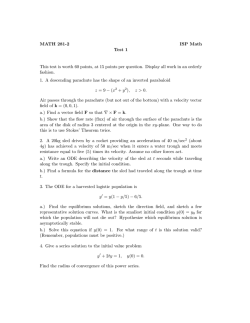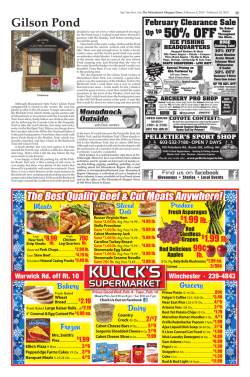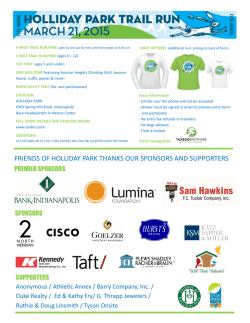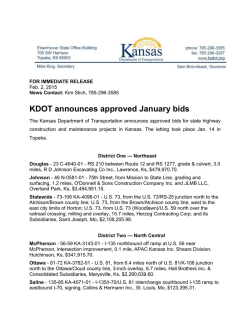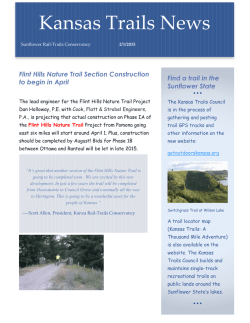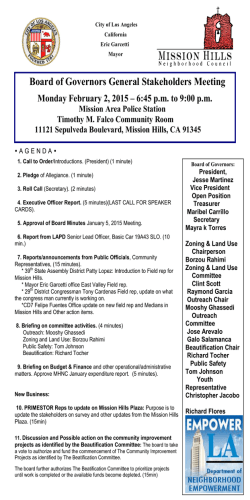
COLD CASE FILE #AH135
COLD CASE FILE #AH135 2015 Arrowhead 135 I spied through the small window of my biosphere. It was dark out there, an inky medium. The frozen birch trees appeared to be trying to claw down at me with evil, black tendrils. The snow lay like a blanket of uncoloured sand for as far as I could see. Condensation from my breath rose like a silk wisp into cold, dense air. My breathing sounded loud and obnoxious in that silent landscape. A ghostly glow appeared, the lumen dancing about wraith-‐like & creating sinister shadows. Then a figure went past, darting across my tiny viewing hole. The sound of scraping I imagined to be either this monsters knuckles on the ground or his long killing scythe…. “You ok, bud?”…The monster exhorted in my own tongue. “Ah yep. Just trying to thaw out my frozen toes in the sleeping bag” He disappeared only to return a half minute later, perhaps to finish me off? “Just making sure that you really are alright” “ Yep, all good. As soon as my feet feel warm I will get out & be on my way. Thanks for asking though.” I unzipped my sleeping bag & watched John Storkamp get swallowed up in the black as he continued on towards the finish line some 20 miles distant. I felt alone. I looked around & wondered what other creatures were watching me from beyond the darkness. I didn’t want to become a Cold Case File of the frozen woods so I scrunched my toes some more to get the blood flowing. I wanted to get back on the trail…. This was the Arrowhead 135 mile winter race across the frozen tundra of northern Minnesota. I was participating in the foot section pulling a 40lb pulk behind me. Others had opted to ride fat bikes or ski. Whichever way you looked at it, it was some chore getting from International Falls to Fortune Bay. There are just three check points along the way about 35 miles apart where you can restock otherwise you are out there in the boonies, alone most of the time. With a 60-‐hour cut-‐off that will give you some idea of how tough it is to get through. 2015 was a “warm” year though I still managed to get frozen feet twice. A normal year will have -‐20 to -‐40 temps to deal with on top of the hardship of pulling a sled on foot. This is a gear race. If you come unprepared you are going to suffer miserably or worse. There is a mandatory survival kit to carry including sleeping gear, stove, calories, insulated fluid containers, etc. It’s a long way between checkpoints & even longer time if there are hills, and there are plenty, so you need to carry enough food & fluids to get you to the next restock point. We started in the dark & made our way south on an old railway bed. It is generally flat for most of the first section of 37 miles to Gateway store, which is the first checkpoint. It got warm very quick in my clothing even though I was only wearing a light merino undershirt with a Gore-‐Tex Pro shell jacket on top. I backed off the effort after a few miles to stop sweating & to save myself for later in the race. For some reason I found myself out in front & slowed down even more thinking I might be burning myself out. One runner followed me close behind, so close in fact that when I slowed a little when pulling out my water bottle he stepped on the back of my sled. He stayed there for a dozen or more miles until I finally pulled over just so he would go past. The footing had become a little tricky even though it was flat so I needed to concentrate harder without worrying about someone running over me. Now I had time to look around at the expanse of trees & the white blanket, which covered the landscape. At one point I glanced up & seen a canine of some sort up ahead and wondered if it was a timber wolf. As I got closer I could see a wagging tail & realized it was my new buddy from the day before at check-‐in. Scout is a border collie from Colorado and was out enjoying the Arrowhead with his humans. I gave him a quick ear scratch on the way past and wondered if he would be interested in some sled pulling in exchange for some snacks in return. I felt good all the way to Gateway and was third runner into the checkpoint. The general store was littered with other racers wet gear and there was a high consumption of calories and fluids going on in a gorge-‐fest. I was absolutely soaked so decided to change some wet gear for the upcoming night section while I stuffed anything I could find into my mouth. You burn up a lot of calories running in snow & pulling a sled and it’s hard to keep on top of it so any chance there is to load up you better do it. Between check point #1 and #2 at Melgeorge is another 35 miles but it’s different this time as soon after Gateway come the hills. The elevation profile shows fairly small hills but they are relentless in sections and get you puffing and sweating. Coming downhill is another thing altogether with a pulk behind you. First you have that extra weight pushing you. Then you will find that the pulk usually has a mind of its own and wants to overtake you or just pull you where it wants to go. I was only using one fiberglass pole on my harness connected to the sled. I figured I could reach behind & grab that pole and help keep the sled on the straight and narrow but in practice most times I had no mechanical advantage with that grip and it would get away from me. Either it would roll over or slide into a snow bank and fill up with snow, both requiring me to get out of the harness to rectify. I spent a lot of time messing with that sled. The best practice I worked out was to direct it to the side of the trail where the snow was built up so the rail would run along the side of the bank & slow it down enough where it didn’t want to overtake me. It didn’t take me long to envy anyone that had a two pole set up. Some had a rope connection and that allowed them to pull the sled between their legs at the top of a hill, sit on the load & ride the sled down. I didn’t have the benefits either way & rued my decision of the set up I had chosen. But these are the things you learn as a rookie in this type of event & once you start with your gear you have to finish with that same gear. When night came down it felt heavy it was so dark. On the flight from Hibbing to International Falls I had looked out the window for lights but saw nothing so I knew beforehand that we were going to be way out there alone in this race. The timber wolves were out there but probably kept to themselves. I think I saw one up the trail at one point turned around looking back at me but I wouldn’t have trusted my mental capacity by then to know if it was real or not. The hills came. I tempered my effort going up them to save my energy and I didn’t want to risk pulling an Achilles or something else by exerting to much pressure on my legs. I resorted to a small step, lent forward & dug in with my trekking poles, leaning on them to help use the upper body to pull the weight uphill. At the top I would lengthen my stride, put my poles in the left hand, reach around and grab the connection pole to the sled and try to run fast enough downhill so the sled didn’t want to come around me. If it didn’t try to overtake me it would just gather speed and the pole would bump me in the middle of the back and try to push me over headlong. Soon after dark I started to suffer from something I didn’t think I would have to worry about too much in this race: thirst. I had a ravaging dose of it that almost drove me crazy. I had left the last check point with over 3 litres of fluid but I couldn’t get enough and soon I was having to ration my supply when I worked out how long it was going to take me to get to the next check point. I had some calories mixed in the bottles but most would come from snack food I was carrying so when the fluid started running low I couldn’t get food in as my throat was just to dry. I was resorting to eating snow to try and slake my thirst but in the meantime I was bonking from low calorie intake compared to my energy output. The hills still kept coming but I was having more of an issue getting up them without fuel. It looked like I was going to take about 12 hours to get to Melgeorge so when I was down to about half litre of fluid with still 5 hours to go I could think of nothing but ice cold orange juice. Every hour on the hour I would take a small sip from my bottle and have to stop myself from sculling the entire contents in one fell swoop. The going was tough but the thirst was purgatory. My Garmin had died in the cold so I had no idea how far I really had to go except for some crude navigation calculations based on what I thought my speed was. I was passed by a number of runners on this stretch & wondered if I was the only one dying of thirst? In the early hours when my mind was blank and I was looking at nothing but the ground I realized that it was a lot colder than minutes before. The ground was unusually flat and it took me a long while to realize I was on Elephant Lake and the cold was from the ice underfoot. That meant I was close to the checkpoint, which came as a fine relief. Not long after I was sitting in a heated lounge room, eating wild rice soup, munching toasted cheese sandwiches and scratching Scouts ear as his human, Wendy Drake was volunteering at Melgeorge and taking good care of all the wayward participants. There were beds upstairs if you needed or wanted to sleep. You could have some clothes items dried and you could eat until you were full. It was a dangerous place. I grabbed my drop bag & emptied it out. I couldn’t believe I had brought so much useless food with me. It weighed half a ton and I couldn’t get it down without copious amounts of fluid which meant carrying more weight, so I ditched it all & just took my drink mix, some gels and some chocolates. Taking one last longing look around the warm room I bolted outside before I got trapped in all that comfort. I hitched up to the sled and got moving quickly to warm up and get back in the groove. Once you have stopped it doesn’t take long to feel the cold in your joints and wonder how you can ever get warm again but as long as you put some effort into your movements it doesn’t take to long to start the blood flowing and warming up. I hustled after leaving Melgeorge for just this reason and it took at least a mile before I was feeling sufficiently warm and mobile. A couple of miles out I passed a runner who had set up his bivy just off the trail for a sleep. I hadn’t felt tired up to that point & don’t usually get sleepy tired during the night on an ultra. I think most of my working life has aided me in going long periods without sleep or short sleep. I remember working on a deep sea trawler in the Antarctic circle once where the crew had two hours sleep in over five days and manhandled over a hundred tons of fish and a hundred tons of ice. Working at sea for nearly thirty years as well as doing other manual type labour work has given me the ability to go long periods without rest, though that doesn’t mean I really don’t enjoy sleeping when I can. When I passed that runner about to crawl into his bivy all of a sudden I got sleepy to. I kept going out into the darkness; the only sound my breathing, footsteps and the sled scouring the ground. The headlamp illuminated the trail ahead but my focus stayed just in front of my feet as I whiled away the hours in a total brain funk of nothingness. I figured I was around the 85 mile mark which was a happy thought because it meant the half way point was well past. I like to think that once you get past half way in an ultra you are over the hump, of course it doesn’t get any easier but it is a bit of a psychological boost. I don’t remember what I was thinking about, if anything but all of a sudden my toes were stinging and very uncomfortable. Due to sweating I am sure my socks had been fairly wet since the start and I realized after the race that the shoes I was wearing don’t breathe very well. They had a built in gaiter that when zipped up practically sealed off the foot from breathing. I should have left the zip down but this is one of the things you learn usually the hard way. I pressed on for another couple miles but by that time my toes were very sore. If I do develop blisters in a race I just run right through them. They burst, rub again, drain some more and I worry about them after the race. Now they all felt like they were tingling and hot. I stopped and did some heel raises and scrunched the toes a bit to get circulation going then pushed off again but soon I realized I better take more of an interest in what was going on rather than suffer any consequences. I don’t know if they were frozen but couldn’t think of anything else. I stopped and disconnected from the sled then walked around a bit. My feet were like wooden blocks and wouldn’t bend at the toes. Without further ado I got my sleeping bag out and laid it on a sleeping mat then crawled in, shoes on and zipped it up. I kept wiggling my toes but before I knew it I had fallen asleep. It seemed like a couple seconds passed when I heard a sled go by. Peeling open the zip I noticed it was lighter in the sky and I spied the runner that had passed me disappearing over a hill further along. My feet were toasty warm and when I looked at my watch I had been asleep for two hours. I hated that feeling that I had missed two hours but it was gone now and nothing to do but get hustling. As I piled my stuff back on the sled a biker came along and he started to interview me for a newspaper (I think). I remember thinking the chirping of his GoPro camera sounded really loud out there when it turned on and off. By now it was quite light and I felt anxious about the amount of time I had wasted? When I got back on the trail I felt revitalized and pushed along at a good pace. I was looking forward to daylight. It had been somewhere near 24 hours since the race had started but I didn’t know if that felt like a long time ago or a blip? At the end of the race it seemed like we had been out there for a week. The full light of day felt awesome coming down on me as my muscles warmed up and the rhythm came back. I tried to maintain a robotic cadence when underway like I was working to a metronome: pole in, foot forward, pole back foot back. The clicking of the pole tips helped to keep the rhythm going like a snare drum. Further ahead I could see the runner that had passed me when I was in my bag so that gave me impetuous to push a little harder to catch up. I drew up alongside Sue Lucas and we ran together for a while talking about Canada as she is from Manitoba. I took notice of her sled, which looked very nice. I don’t have much of an idea about sleds but that one looked good. At some point I started running a bit harder and ended up alone again trucking across the white tundra. The air was crisp and I was feeling really good. A long section of hills started and I worked hard at getting up them, surprised that I had so much energy. The downhill’s were still presenting problems with the sled but if I could run fast enough then it had no chance to play up on me. It was a good reason to push hard on the down as well and I found I was making good progress. A fat biker appeared ahead so I put my head down to try and catch him in the hill section. It looked difficult to say the least pushing one of those beasts up some of these hills, loaded with gear. When I got beside him we chatted for a bit and he said he thought there were about five substantial hills in this section and that we were on the third one. Taking note of this I pushed off ahead and started counting hills, which was probably a mistake as after about the ninth hill I found myself a little grumpy about when they would stop. When I get like this in a race I end up telling myself “they will end when you are through them”…so that’s what I did and fretted no more. When I wasn’t thinking about them they all of sudden were gone and I was chugging along on the flat though a nice glade, taking time to look around and wonder how far the last check point was ahead. At various times during the race I had heard the hum of snowmobiles approaching. The race had a safety patrol plus the Arrowhead trail is used by recreational snowmobilers, but this time I could hear a different machine coming and wondered for some minutes what it was until it came around a bend at high revs. It was a grooming machine with tracks, towing a large sled to smooth out the trail. I thought this may make the surface good for us runners making it nice and smooth but in fact it was the opposite. The surface ended up being smooth all right but it was a thick soft surface that was a real slog to get through. I tried staying right off to the side to hopefully find a firmer surface where all the fat bikes had been but mostly it was like trying to pull through soft sand. Awhile later I heard the tractor coming back behind me and had to move to the other side of the trail to let him pass. Looking just ahead I could see an intersection of sorts and by the time he went by me we were right near it. The tractor continued straight ahead at the junction and was soon followed by two snowmobiles. The logic in my brain at that time concluded that I need to follow where the grooming machine & snowmobilers went because the Arrowhead is a snowmobile trail. I don’t recall seeing any other signs or looking for them even, as to me the decision was made when I seen which way they went. Some time later that little leak of doubt came out and I started to wonder and fret if I had taken the right way. The obvious sign would be to look for all those fat bike tyre marks, footprints and sled marks but of course the grooming machine had obliterated any sign of what had been before. I went on, down a section of hills. Then I was next to a tarmac road, the trail went back up into the forest and climbed a steep grade that was no wider than the grooming machine. The going was slow through deep mash potato snow with lots of dirt mixed in it. It wound down again and soon I was standing next to a road with no sign of where to go next. After disconnecting I walked up and down the road looking at various gates and sidetracks wondering if the route was here somewhere. There was a sign for “The Landing” but I didn’t recall seeing that on the race map. I pulled out the map I had brought with me, a snowmobile map but it looked like it didn’t show anything south of Orr. Just as I let out an expletive that would have scared away any small woodland creatures nearby, a pick up truck came over the rise so I flagged it down. I totally understand why the elderly couple had a gob smacked look on their face as I stuck my head in the window talking gibberish in an Australian accent about where some trail was, that I was in a race, had they heard about it, could they tell me if I was on the right route. After telling them the race ended at Fortune Bay they said “oh no problem. Just go up past The Landing & you can go across Lake Vermillion to get to Fortune Bay”. I pondered this for a bit but couldn’t recall that there were two lake crossings; only one and that was back at Melgeorge. Finally I had to admit to myself that I was in the wrong place at the wrong time right then. Trudging back to my sled the demons were flying all around my head laughing and poking me. I swatted at them like mosquitoes but they were more tenacious and gave me a good serving of gloominess. I felt something else going on: I looked up to see all my sails hanging limp, the wind had gone right out of them…. The trek back to the start-‐over point was a very slow, lonely and demoralizing slog. I was paying a premium price for my stupidity. I trundled past the now silent grooming tractor, languishing on the side of the trail. It seemed to snicker at me in its quiet repose. “I trusted in you but you led me astray, Mr. Groomer” I muttered in dejected tones… ”Nah, you just f*^#ed up, dufus” he replied without a skerrick of empathy. I had to nod in agreement. The light was getting lower & the landscape was turning into shades of grey as I neared my resurrection point back into the race. I had been off the grid for over two hours, two long hours added to my finish time. It burnt at me but was unobtainable again, that time had gone. I had relied on some music in my head to bring me back online and boost my spirits a bit. Incubus had been playing “Dig” over and over, which had helped me lift my chin. I turned onto the proper trail, finally, and got to it. I had no idea how far the last check point was at Ski Pulk but I figured about 4 miles. A couple miles along the snowmobile patrol came by and stopped to check on me. They thought it was about 1-‐2 miles so that was a little upper for me. The sun disappeared, headlamp came out and it got a little colder. An hour later I was still going and wondering where this checkpoint was. Every time I rounded a corner I would look up the trail in anticipation of some lights, but nothing. It seemed to take forever to get there. Finally I got a whiff of wood smoke and spotted a glow ahead. That was a good moral booster to get to Ski Pulk. The volunteers showered me in hot chocolate, biscuits, coffee and bottle refills. I even sat by the fire for ten minutes to warm my paws before I came to my senses and told myself to get going. I was getting colder but the Ski Pulk peeps said I would soon be warm going up Wakemup hill. No kidding. I got to the top with sweat trickling down my face and clouds of condensated breath coming out of me like a coal burning choo choo. Bringing up a remembered visual of the course profile I knew the trail would generally be flat from here to the finish though it is actually a steady uphill all the way. Within a mile I was very cold. The ambient temp had come down but I knew my fatigued body would also be having a hard time keeping the furnace going. I pulled my facemask up and put the hood of my jacket up. Soon after I took good notice of my toes, which felt like they were getting frozen. I didn’t hesitate this time and stopped straight away, folded out the sleeping mat and crawled into my sleeping bag with shoes on and zippered all the way up. It felt good for a while until my legs started cramping up. I usually get this after a long hard ultra until the muscles relax a bit. Now I was trapped in a sleeping bag rolling around like a fly in a spider web trying to alleviate leg cramps. Then my toes started stinging like crazy when they started to thaw. It was soon after this that John Storkamp went by and checked on me. I stayed there for over an hour getting my shit together and frustrated that I was only 20 odd miles from the end but needed to sort my toes out first. When I finally crawled out I went straight for my Neo overboots that I had carried from the start but hadn’t put on yet. Once that was sorted I stuffed all the gear into my sled and pushed off. 20 miles is a heck of a long way at the end of a long ultra no matter which way you look at it. I tried to turn off thinking anything about it and just zone out zombie like. I was maintaining a slow jog shuffle that was pretty pathetic but that was about all I had. I guess I had gone a couple miles since my bivy when my feet started getting incredibly sore, mainly on the bottom. It felt like I was sloughing off all the skin. I hadn’t taken off my shoes let alone the socks since the start and they had been wet with sweat pretty well the whole way then frozen a couple times and thawed. Not really acceptable pedi care but that’s how it was. It became like every step was an “ooh, aah”. I had visions of the total carnage of my feet going on and how they would look at the end scaring women and children away. I was actually trying to lift myself on the trek poles to take weight off them at each step. The other battle I was having was not looking at my watch every ten minutes. It was just not going to make the time go any quicker. I could only guess at the speed I was doing and the remaining distance so I didn’t want to think I was closer to the end than I actually was, that can be a total downer. I got to an area that seemed to be wide-‐open plains with no cover. I could see a small breeze rustling some shrubs and straight away felt the extra cold it brought. Off in the distance I could make out trees so hustled a bit faster to get over there where there would be more cover from it. Just then my headlamp blinked, which means the batteries were going down. I had carried two headlamps with lithium batteries so I wouldn’t need to change batteries. The first headlamp had lasted about 18 hours but this one had only been on for about 4 hours? I figured it might last until the finish but then wasn’t so sure as the cold would shut it down sooner. I resigned myself to changing the batteries and got to a more covered area before stopping and fumbling around doing it. A glow came up behind me and a biker stopped to make sure I was ok. She thought we were about 5 miles out from the finish and we chatted briefly before continuing on. When I got going again I was just impatient now to be finished and get off my aching feet. I crossed a tarmac road and could see a glow of lights further ahead which I figured might be the Fortune Bay resort. I stumbled on trying to jog, trying to walk and trying to stop from falling over. I felt satisfied that I was wasted, no shame in that after 130 odd miles pulling a caboose. As the lights brightened I could make out details of buildings, fences and vehicles: this had to be it, if it weren’t then I would need to find some more energy. After rounding that last corner that small hill in front of the finish line didn’t deter me at all no matter how done I was. I trundled up there at a good shuffle and got a rousting welcome from the two race staff there, which was much appreciated. 46 hours 19 minutes…whew, what a chore. I was well and truly ready to stop. After being taken to the basement for a check that I was still carrying my mandatory safety gear it was off upstairs for warmth, dryness, food and removal of my shoes and socks, which was a feeling that is difficult to explain. 2015 was a “warm” year on the Arrowhead. It is hard to imagine going through that effort when it is -‐30. That must be something else. An iconic race for sure. Not for the faint of heart. Thanks volunteers and race staff. Congrats to all who toed that frozen line… Thanks Wendy Drake & Greg Ames for the pics shown here.
© Copyright 2024
